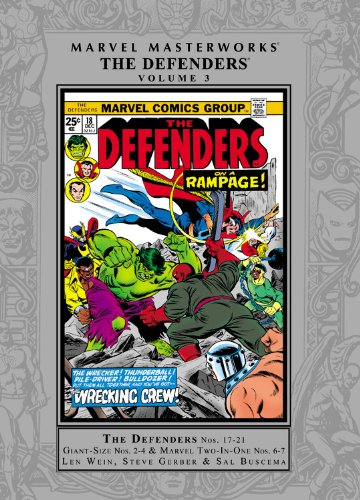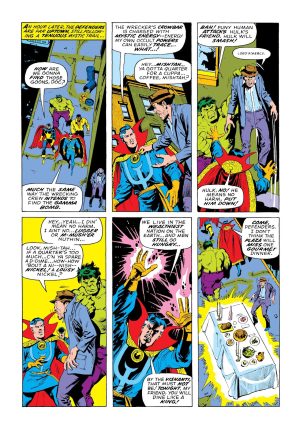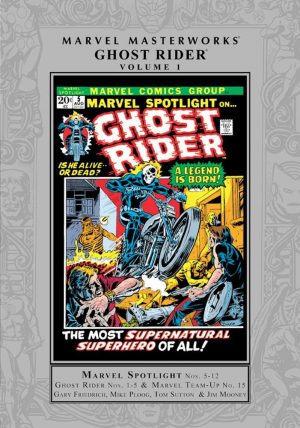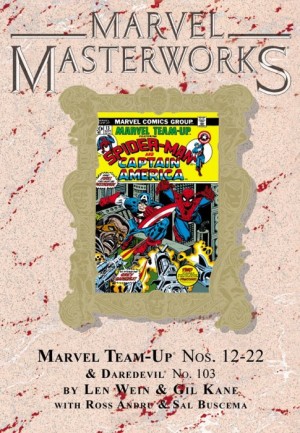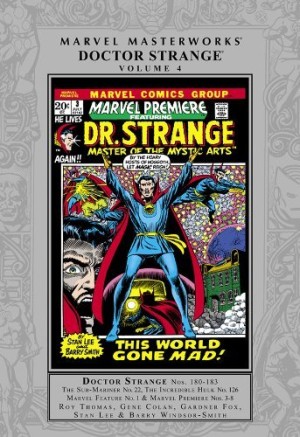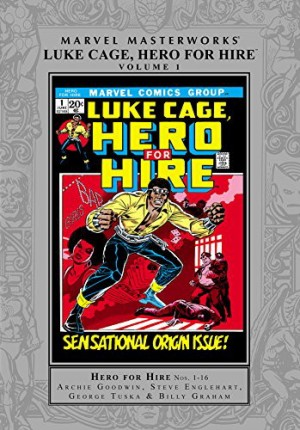Review by Frank Plowright
As a rule of thumb, the greater the number of writers and artists listed for a collection, the less satisfying it’s going to be, and so it proves with this selection of early 1970s Defenders stories transitioning from Len Wein to Steve Gerber plots via Chris Claremont. In addition to just a handful of the regular monthly issues it includes three Giant-Size Defenders, and a couple of Gerber’s team-up stories that tie in, adding to the disjointed feeling.
The lack of originality about Wein having the Defenders facing their own fears in the opener is mitigated by Gil Kane art, although far from his best, and an appearance from Daimon Hellstrom, in those days still the Son of Satan. Wein’s on slightly better form introducing Luke Cage to the Defenders along with the Wrecking Crew, and having Thunderball revealed as far more than a street thug is a surprise. Still, it’s not three chapters worth of plot. A young Chris Claremont scripts the finale.
Most of the remainder is Gerber’s period of settling into the Defenders. A theme that would occupy him throughout is the unwilling transformation of demented human cultist Barbara Norris into the Valkyrie, and it’s there in his ethereal first outing. George Tuska’s art on the first part hardly makes the most of the visual opportunities, with Sal Buscema better on the middle chapter, although his layouts on a conclusion drawn by Vince Colletta isn’t attractive. It’s a story rooted in humanity and evoking sympathy for Valkyrie, but one that has enjoyable or affecting moments rather than sustained quality. The nutty use of a celestial harmonica, though, is a definite pointer toward Gerber’s later injection of absurdism. That’s confirmed by Gerber’s incorporation of characters he’d seen in a comic reprinting Marvel’s old horror material, although the Headmen’s true glory arrives in Volume 5. The stories inspiring him are supplied at the end of the book. These aren’t credited, but Angelo Torres signs his art, while Doug Wildey’s three pages are sumptuous. Bob Powell draws Arthur Nagan’s horrific transformation.
Wein, Gerber and Jim Starlin plot an encounter with Starlin providing layouts for other artist to draw an encounter with the Grandmaster, and a series of horror fantasy episodes. It introduces later Avengers villain Korvac and the appealingly ludicrous Grott, and there’s no correction of an error right at the end, which should have resulted in the Earth falling under Grandmaster’s control.
We have to wait until near the end for what’s by some distance the volume’s highlight courtesy of Gerber and Don Heck. It features a shocking tragedy near the start, an exploration of Kyle Richmond’s millionaire social life, a good guest appearance from Yellowjacket, and the return of his former villainous comrades the Squadron Sinister. Heck has little affinity for superhero action, but his civilian scenes have an attractive polish.
This is Gerber working out his methods in what’s conceptually interesting, but inconsistent, but having settled into the series, the final story leads the way into the better Volume 4. The stories from both are combined in black and white as Essential Defenders Vol. 2.
